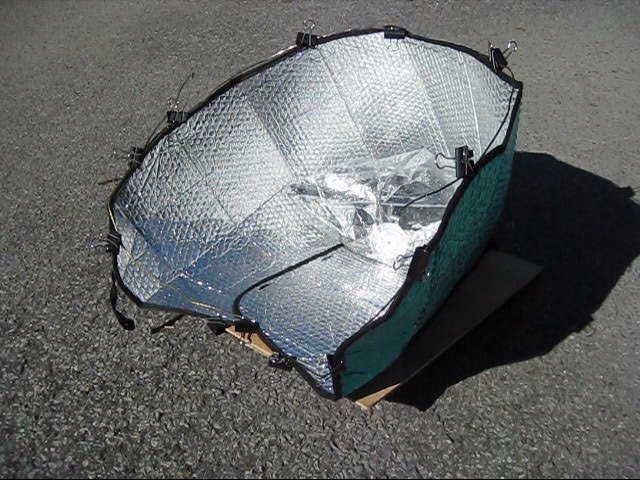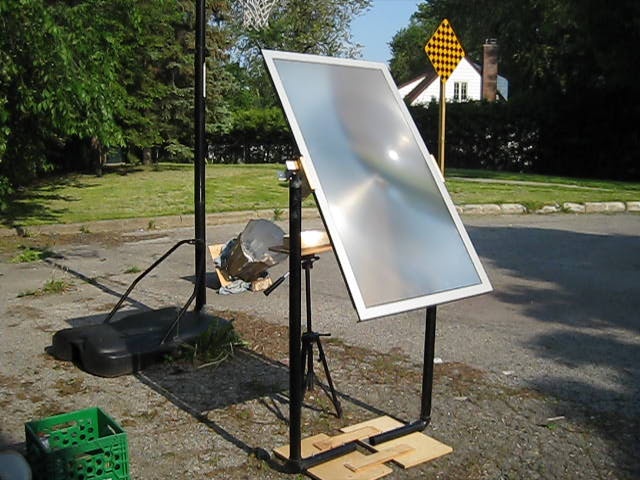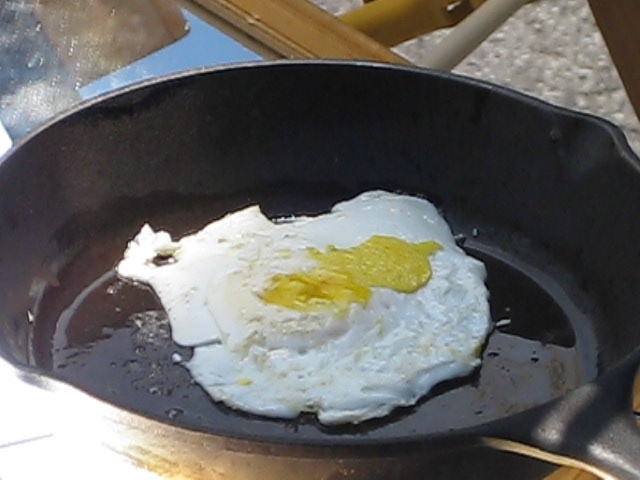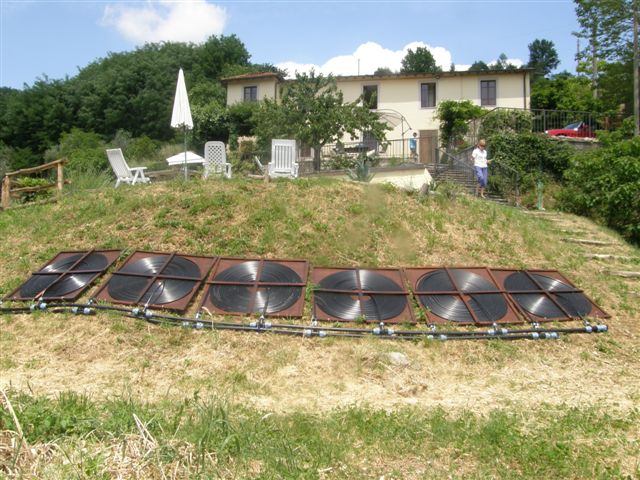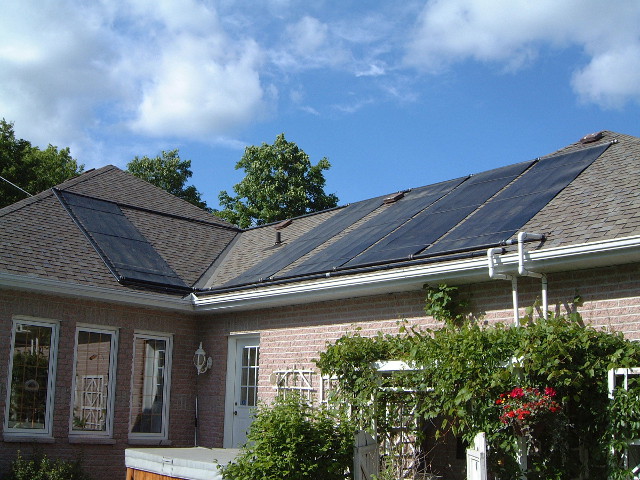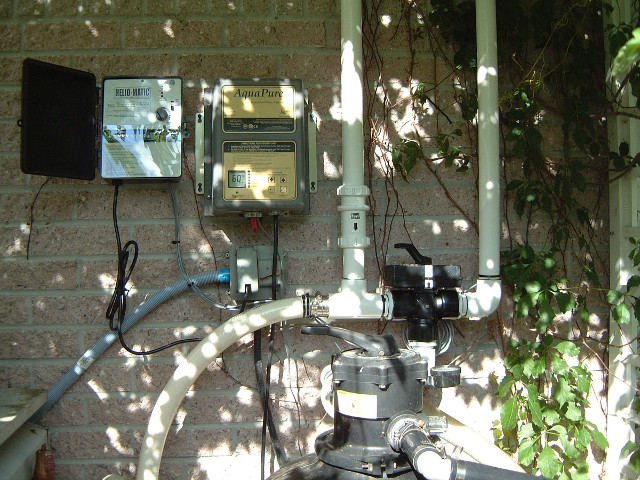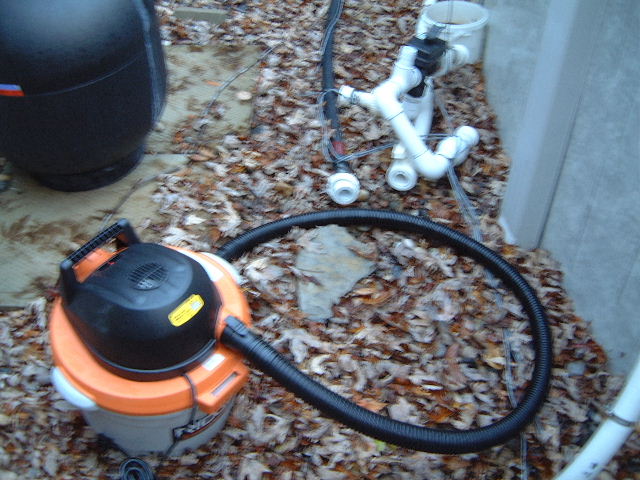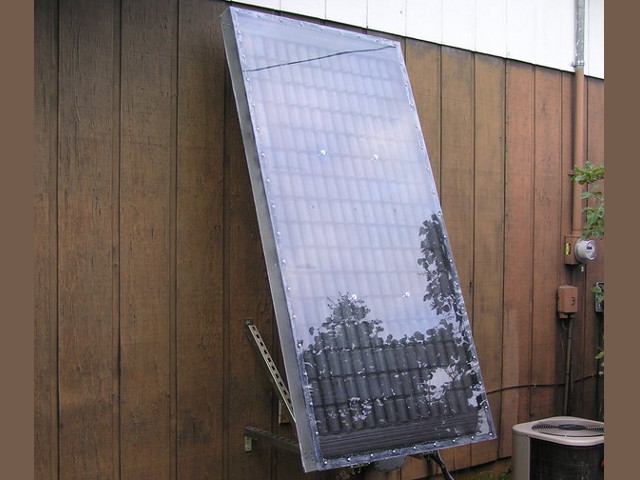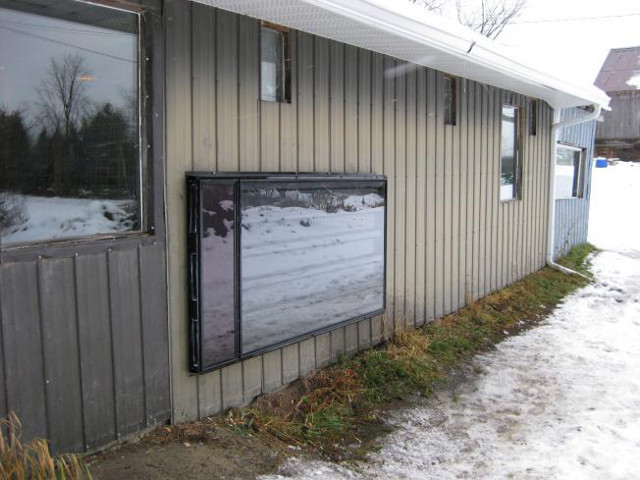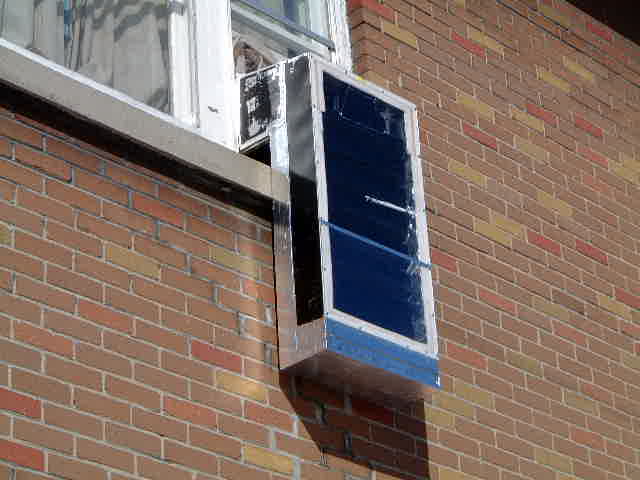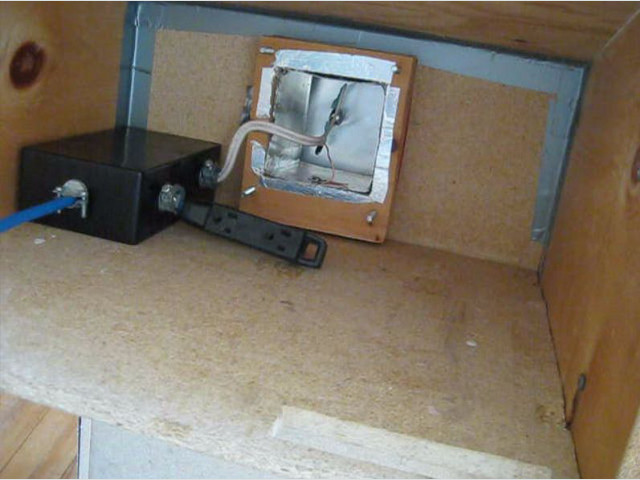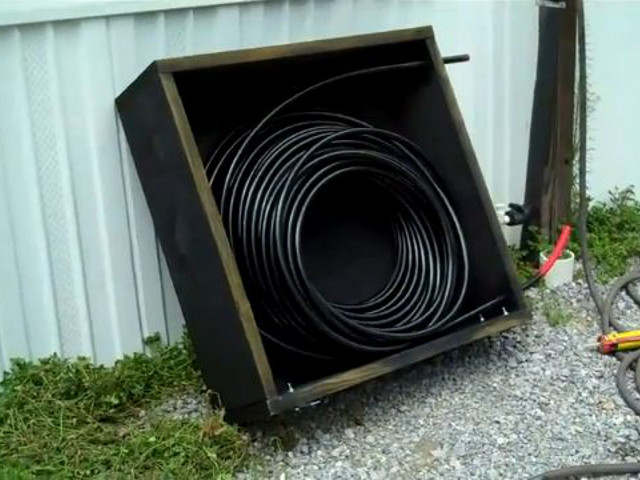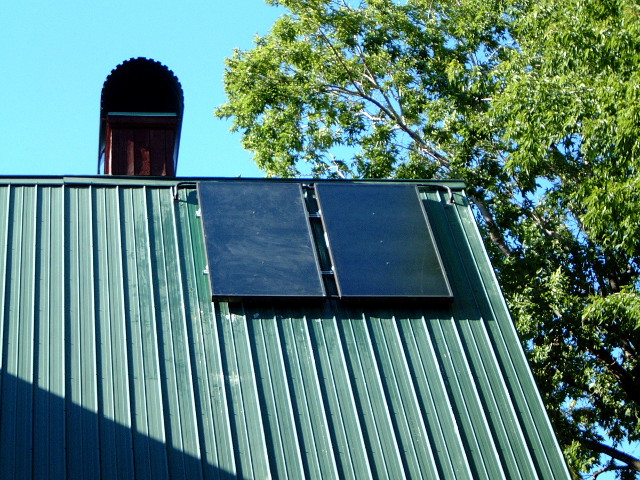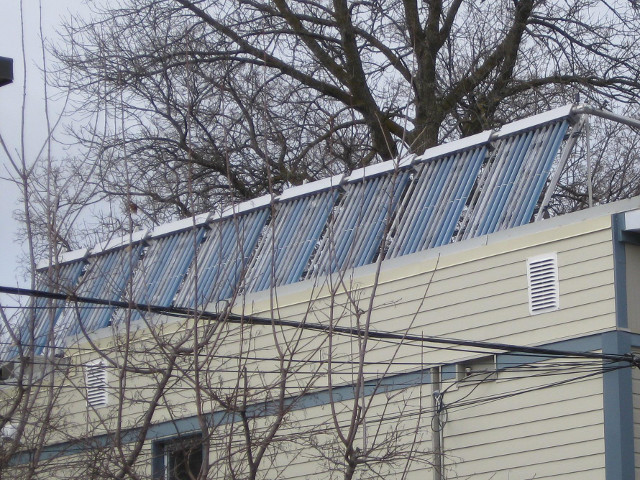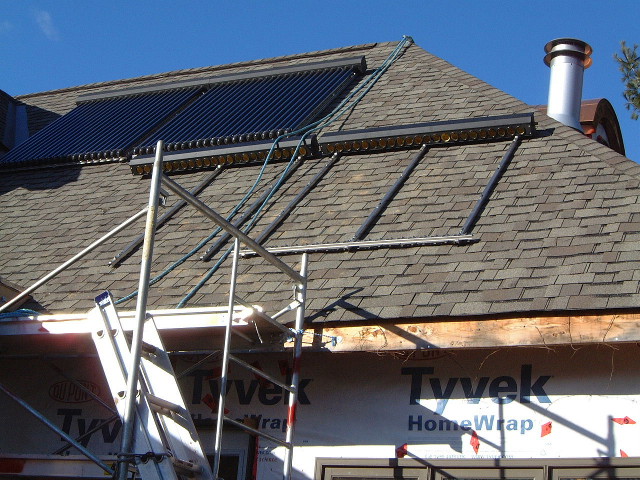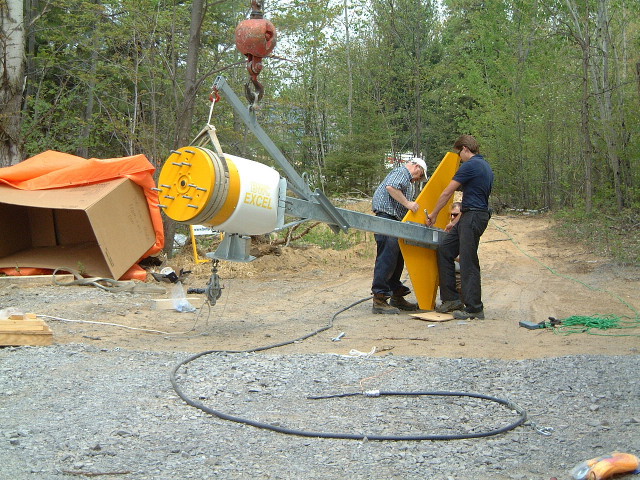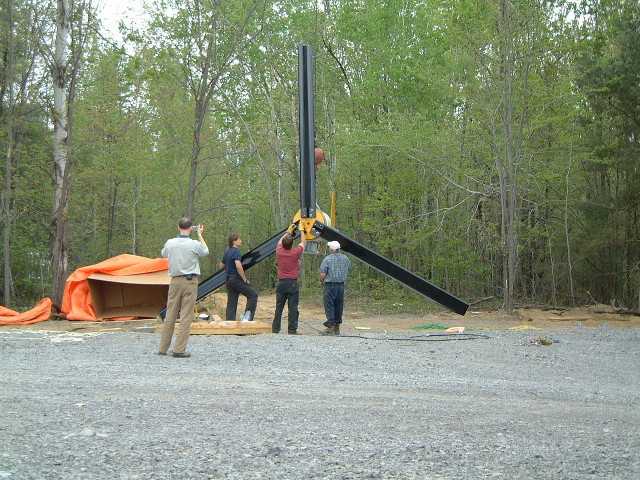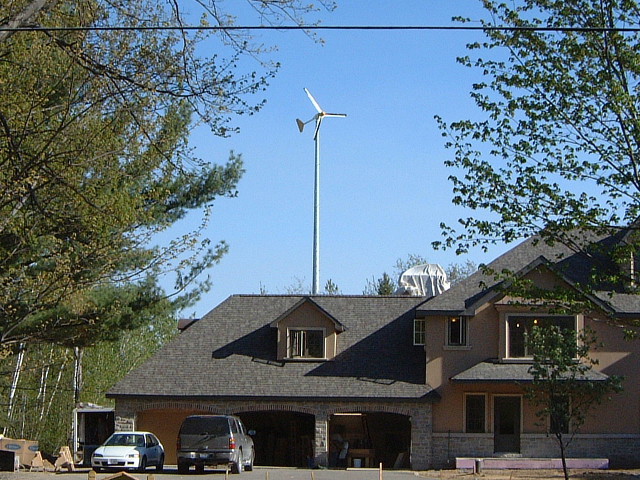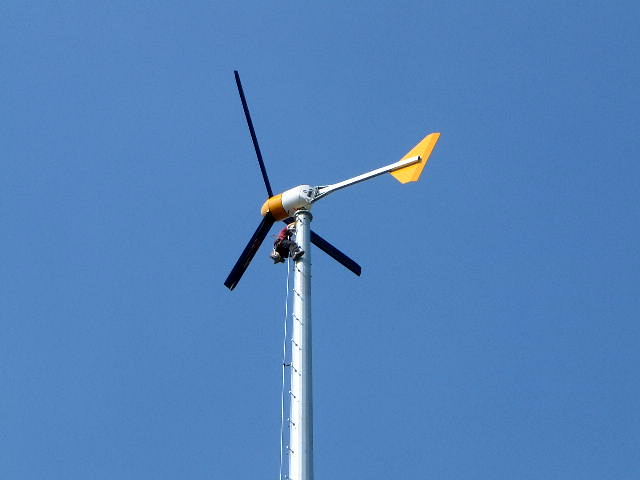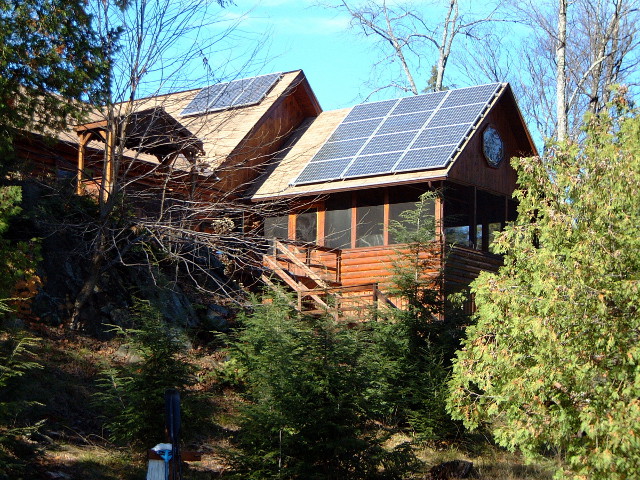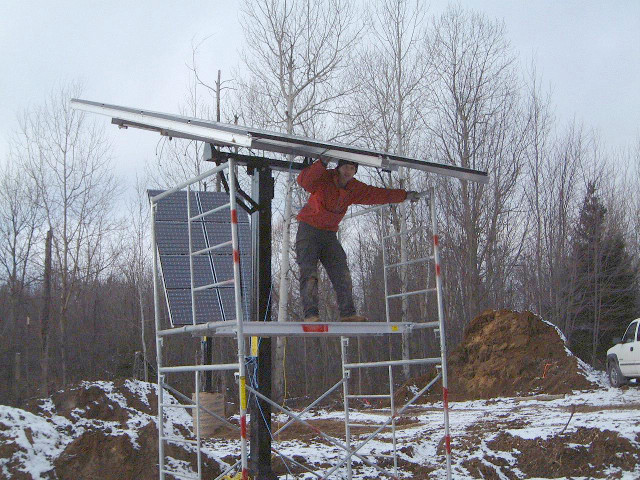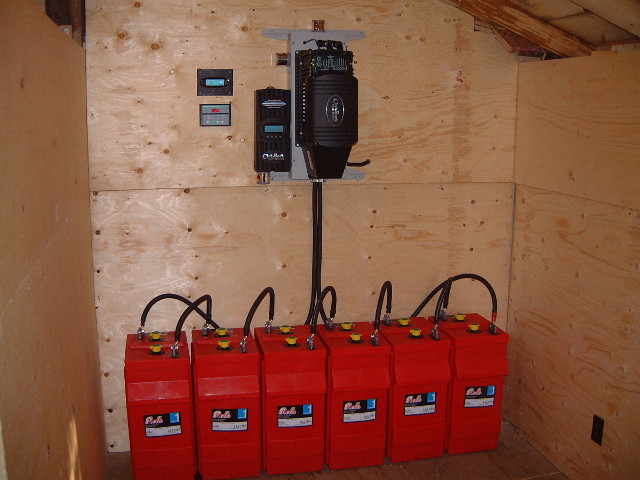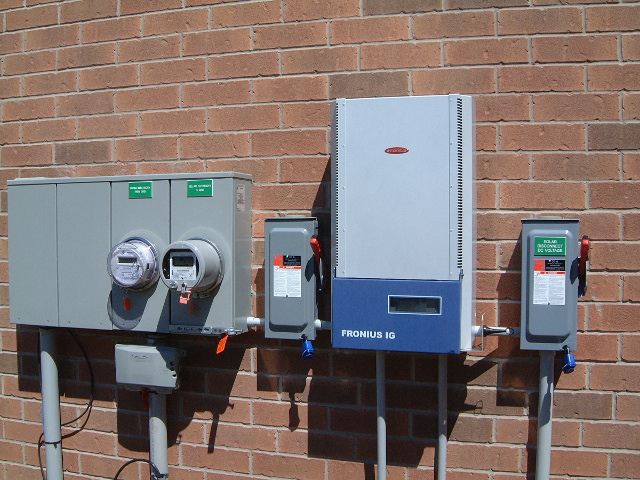Getting started with renewable energy
Renewable energy systems available to the average person
(in order of simplest/cheapest to hardest/most expensive)
Solar cooking
Surprisingly, this works. I cook this way when the sun's out at the right time of the day and I have the time to check on the food every 20 or 30 minutes. Different types of solar cookers are for different types of cooking just like you use your oven for some things and the heating elements on your stovetop for others.
The simplest way to do this is probably to get a car sunshade, the type you put in a car windshield to reflect the sun away while the car is parked, and shape it properly to reflect the sun to a cooking pot that's inside an oven bag. I've warmed up canned beans to 200F (93C) for 30 minutes under light cloud cover.
If you want to heat things up to 300 to 400F (150 to 200C) like in a conventional oven then you'd make or buy a solar box oven heater. A simple one of these can be made out of cardboard, aluminium foil, and some tempered glass.
And there are many more types. See the solar cooking section for more on this.
Solar pool heating
This is for folks who want to extend their pool season, starting earlier in the spring or going to later in the fall when the water is too cold. Most often this is done with a natural gas heater but the same can be done using solar. The payback with a commercial solar pool heating system can be as little as three years. If you make your own, which is easy to do, then the payback is much quicker.
See the solar pool heating section for details about both commercial and DIY/homemade systems.
Solar air heating
This usually involves taking indoor air, running it through a box on the outside of your house where the sun heats the air, and then returning the now heated air back indoors. There are some commercial solar air heating systems though many people make their own.
See the solar air heating section for more on this.
Solar domestic hot water
This involves heating water for taps, showers, washing dishes and laundry. Basically anything except space heating. Most systems supplement an existing heating system such as electricity or natural gas.
If you're purchasing a commercial system then unless you have rebates or some other type of incentive program, your payback in comparison to heating with something conventional like electricity or natural gas will be at least a decade. However, if you make your own, which many people do, then your payback is substantially shorter.
For more on this see the solar hot water section.
Solar hot water for space heating/Hydronic radiant floor heatingThis uses some of the same system as the Solar domestic hot water mentioned above. Basically the part that does the actual heating using the sun is the same. The part that differs is where the heat is used. In this case most often the heat is distributed to the house by embedding plastic tubes under the floor and running hot fluid through the tubes. |
Wind
This involves using the wind to rotate propeller-like blades, i.e. a turbine, which then run a generator to produce electricity. This is less expensive than the alternative that is often mentioned at the same time, solar power or photovoltaics. Unlike solar, it does involve moving parts which may break down sooner. You need to have the wind and to be able to position it well above nearby trees and rooftops.
You can purchase commercial wind turbines though many people make their own.
See here for an example of a very large commercial wind turbine installation.
Hydroelectric/microhydro
If you have a stream with fast moving water or a water source with a sufficiently high downward sloping piece of land beside it then you can put a mirohydro turbine in the stream and use the running water to turn the turbine blades which then run a generator to produce electricity. This has a clear advantage over wind since the wind doesn't always blow whereas the water is always running.
Solar power/solar electric/photovoltaics
This is the most expensive form of residential renewable energy with the longest payback unless you have rebates or some sort of incentive program.
Examples of situations where this makes most sense is:
- you currently have no electricity and the cost of getting it from a utility/power supplier is more than the cost of a solar power system. This is usually the case because they would have to run power lines to your place. This is refered to as an off-grid system, the "grid" being the utility's/power supplier's system. Another example of where you might use it is if you have an RV/mobile home.
- you currently get power from the grid but the utility will allow you to generate power using solar and sell it to them. An example of this is the Ontario, Canada microfit program which pays $0.802 per kilowatt hour for systems that generate 10 kilowatts or less.
For more on this see the Solar power section.
